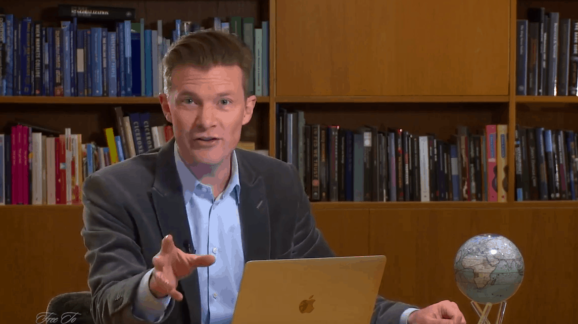VIDEO: Johan Norberg on Resource Scarcity vs. Abundance

It’s an old argument: as population increases and we use up more of the earth’s natural resources, everying is become more scarce. Soon the pressures of so many billions of human beings on the planet will cause a crisis—maybe even a collapse of civilization. It wasn’t an entirely novel theory even back when Rev. Thomas Malthus wrote it up in 1798, and it didn’t get any fresher when Paul Ehrlich recycled it in 1968, but for some reason it keeps scaring the pants off of many otherwise reasonable people. Which is why people like our good friend Johan Nordberg need to keep making videos like the one below.
Nordberg, a Cato Institute Senior Fellow (and this year’s CEI Julian Simon Memorial Fellow), cites the recent research by Gale Pooley and Marian Tupy on how we can more realistically measure resource depletion, “The Simon Abundance Index: A New Way to Measure Availability of Resources.” Pooley and Tupy make the case that, at a minimum, we need to account for inflation and changes in earning power when we try to measure the changes in price (and therefore availability) of resources over time:
Dividing the change in the real price of a commodity by the change in the real hourly rate of income per capita allows us to arrive at the time-price of a commodity, which is time that an average human has to work in order to earn enough money to buy a commodity. According to our methodology, if the real price of a commodity increases by 10 percent but the real hourly income rate increases by 20 percent, the time-price of a commodity falls by 8.3 percent.
What did we find? As previously shown, the real price of our basket of commodities decreased by an average of 36.3 percent between 1980 and 2017. During the same time period, the global real hourly income rate per capita grew by 80.1 percent. The time-price of our basket of commodities has, therefore, fallen by 64.7 percent.
Contrary to much alarmist rhetoric, the counterintutive conclusion is actually the correct one: over time, important resources have become cheaper in real terms and therefore more available. Because of advances in technology allowing both substitution and dematerialization effects (among other factors) the limited mass of the earth’s crust and atmosphere can yield a greater amount of productive resources over time. Which means that political and economic decision-making based on the expectation of increasing scarcity needs to change. Hopefully efforts by Nordberg, Pooley, and Tupy will nudge policymakers in the right direction.
For more myth-busting from Nordberg, see the rest of the “Dead Wrong” video series from the Free to Choose Network.